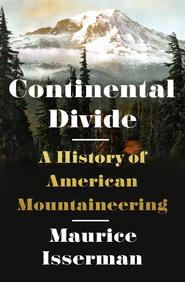
An article titled “Good Tidings, Strenuous Life” by Publius Virgilius Rogers Professor of American History Maurice Isserman appeared in the fall 2015 issue of the Alpinist magazine. As described by the publication, the article begins by explaining how, “In the late 1860s, a generation traumatized by the Civil War saw redemption in a cross-shaped snowfield in the Rockies.” The piece is a precursor to the release of Continental Divide – A History of American Mountaineering in April 2016 (W.W. Norton & Company) by Isserman.
“Good Tidings, Strenuous Life” provides an overview of the exploration of the nation’s western mountains by Sierra Club founder John Muir and his relationship with President Theodore Roosevelt as well as the subtle influence – both Muir, the “spiritualist,” and Roosevelt, the “nationalist,” – had on the American psyche, recovering from the trauma of the Civil War. Isserman addressed the idealized visions and providential ideas held by many white explorers and their total disregard for the Native Americans who had explored the same mountains centuries earlier as well as the influence of Thoreau and Emerson on Muir’s views on the environment. “It is fair to say that Muir was the Thoreau of California, that Yosemite and the Sierra Nevada were his Walden Pond,” Isserman wrote.
In concluding his article he compared Muir and Roosevelt. “Muir and Roosevelt had little in common. Muir was a pacifist; Roosevelt was a warrior. Muir worshipped wild creatures; Roosevelt was a biggame trophy hunter. And although no American president did more for the cause of national parks, Roosevelt had little sympathy for Muir’s commitment to the preservation of wilderness for its own sake. … The payoff for Muir’s efforts came in 1906 when Roosevelt signed the Yosemite Recession Bill, which placed Yosemite Valley and the Mariposa Grove under federal jurisdiction. Once again Muir, the prophet, proved he was also a practical man of politics. Muir and Roosevelt, Good Tidings and Strenuous Life. These were not entirely compatible men, nor entirely compatible philosophies.”
The article is illustrated throughout with paintings and photographs of the mountains in the 19th century American West. Included in the article are a utopian painting of the Valley of Yosemite by Albert Bierstadt, a photo of the Mount of the Holy Cross, and Roosevelt and Muir atop Glacier Point Apron in Yosemite.
Posted October 8, 2015
